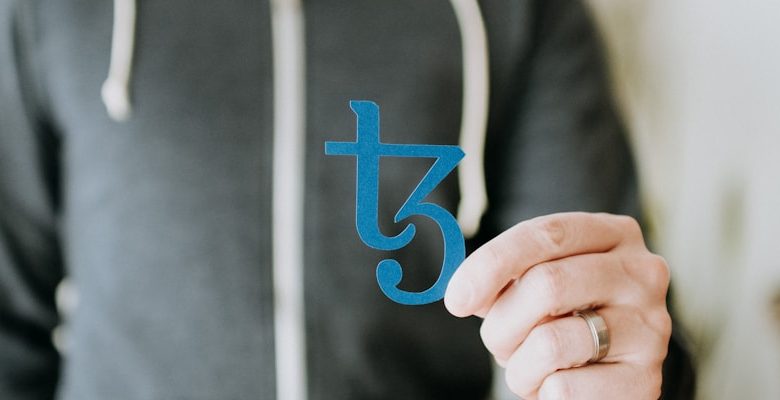How to Evaluate the Security of a Crypto Project

- Understanding the fundamentals of blockchain technology
- Examining the team behind the project
- Analyzing the project’s whitepaper
- Assessing the project’s community and partnerships
- Reviewing the project’s codebase and smart contracts
- Considering the project’s security audits and vulnerabilities
Understanding the fundamentals of blockchain technology
Blockchain technology is a fundamental aspect of evaluating the security of a crypto project. Understanding how blockchain works can give you insight into the project’s reliability and trustworthiness. Blockchain is a decentralized, distributed ledger that records transactions across a network of computers. Each transaction is stored in a block, which is linked to the previous block, creating a chain of blocks – hence the name “blockchain.”
One key feature of blockchain technology is its immutability. Once a block is added to the chain, it cannot be altered or deleted. This makes blockchain a secure and transparent way to record transactions. Another important aspect of blockchain is its consensus mechanism, which ensures that all participants in the network agree on the validity of transactions. Common consensus mechanisms include Proof of Work (PoW) and Proof of Stake (PoS).
By understanding the fundamentals of blockchain technology, you can assess the security of a crypto project more effectively. Look for projects that have a robust and secure blockchain infrastructure, with a clear consensus mechanism in place. This will help you evaluate the project’s potential vulnerabilities and ensure that your investments are protected.
Examining the team behind the project
When evaluating the security of a crypto project, it is essential to examine the team behind the project. The team’s experience, expertise, and track record are crucial factors in determining the project’s credibility and security.
Here are some key aspects to consider when evaluating the team:
- Team Members: Look into the backgrounds of the team members, including their previous roles in the crypto industry, their technical skills, and their reputation within the community.
- Advisors: Check the credibility and relevance of the project’s advisors. Experienced advisors can bring valuable insights and connections to the project.
- Transparency: Transparency is critical when it comes to the team’s identities and qualifications. Make sure the team members are easily accessible and willing to engage with the community.
By thoroughly examining the team behind a crypto project, investors can gain a better understanding of the project’s security and potential for success. A strong and experienced team can significantly impact the project’s credibility and long-term viability.
Analyzing the project’s whitepaper
One crucial aspect of evaluating the security of a cryptocurrency project is analyzing the project’s whitepaper. The whitepaper serves as a detailed document outlining the project’s goals, technology, and implementation plan. By thoroughly reviewing the whitepaper, investors can gain insights into the project’s legitimacy and security measures.
The whitepaper typically includes information on the project’s team, technical specifications, tokenomics, and roadmap. It is essential to pay close attention to these sections to assess the project’s credibility. Look for details on the team members’ experience and expertise, as well as any partnerships or endorsements that lend credibility to the project.
Additionally, analyze the technical specifications outlined in the whitepaper to understand the underlying technology of the project. Evaluate whether the project utilizes secure protocols, encryption methods, and consensus mechanisms to protect user data and funds. A robust technical infrastructure is essential for ensuring the security of a cryptocurrency project.
Furthermore, examine the tokenomics section of the whitepaper to understand how the project’s tokens will be distributed and used within the ecosystem. Ensure that the token distribution model is fair and transparent, with mechanisms in place to prevent market manipulation and fraud. A well-designed tokenomics model can enhance the security and stability of a cryptocurrency project.
Lastly, review the project’s roadmap outlined in the whitepaper to assess the team’s plans for development and growth. Look for milestones, timelines, and objectives that demonstrate the team’s commitment to delivering on their promises. A clear and achievable roadmap is indicative of a well-planned and secure cryptocurrency project.
In conclusion, analyzing the project’s whitepaper is a crucial step in evaluating the security of a cryptocurrency project. By carefully reviewing the team, technology, tokenomics, and roadmap outlined in the whitepaper, investors can make informed decisions about the project’s legitimacy and security measures.
Assessing the project’s community and partnerships
When evaluating the security of a crypto project, it is crucial to assess the project’s community and partnerships. The community surrounding a crypto project can provide valuable insights into the project’s credibility and trustworthiness. A strong and engaged community often indicates that the project has a solid foundation of support and may be more resilient to potential security risks.
Furthermore, partnerships with reputable organizations can also enhance the security of a crypto project. By collaborating with established companies or industry experts, the project gains access to valuable resources and expertise that can help strengthen its security measures. Partnerships can also serve as a form of validation for the project, demonstrating that it has been vetted by trusted entities.
Reviewing the project’s codebase and smart contracts
One crucial aspect when evaluating the security of a crypto project is reviewing the project’s codebase and smart contracts. It is essential to thoroughly examine the code to identify any potential vulnerabilities or weaknesses that could be exploited by malicious actors.
During this process, it is important to look for any instances of insecure coding practices, such as hardcoded passwords or lack of input validation. Additionally, assessing the quality of the code and the overall architecture of the smart contracts can provide valuable insights into the project’s security posture.
By conducting a detailed analysis of the codebase and smart contracts, you can gain a better understanding of the potential risks associated with the project. This information can help inform your decision on whether to invest in or interact with the crypto project.
In conclusion, reviewing the project’s codebase and smart contracts is a critical step in evaluating the security of a crypto project. By taking the time to thoroughly assess the code, you can make more informed decisions and mitigate potential security risks.
Considering the project’s security audits and vulnerabilities
When evaluating the security of a crypto project, one crucial aspect to consider is the results of security audits and any vulnerabilities that may have been identified. Security audits are essential for identifying weaknesses in the project’s codebase and overall security measures. These audits are typically conducted by third-party security firms with expertise in blockchain technology and cryptography.
During a security audit, the auditors will review the project’s smart contracts, codebase, and other security mechanisms to identify any potential vulnerabilities. These vulnerabilities could range from simple coding errors to more complex cryptographic weaknesses that could be exploited by malicious actors. It is important to pay close attention to the findings of these audits and take any necessary steps to address the identified vulnerabilities.
Some common vulnerabilities that may be identified during a security audit include reentrancy attacks, overflow vulnerabilities, and insecure randomness generation. Addressing these vulnerabilities promptly is crucial to ensuring the security and integrity of the project. In some cases, the auditors may provide recommendations for improving the project’s security posture, which should be taken seriously and implemented as soon as possible.



